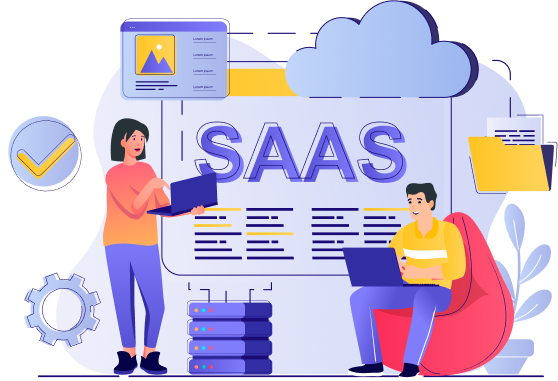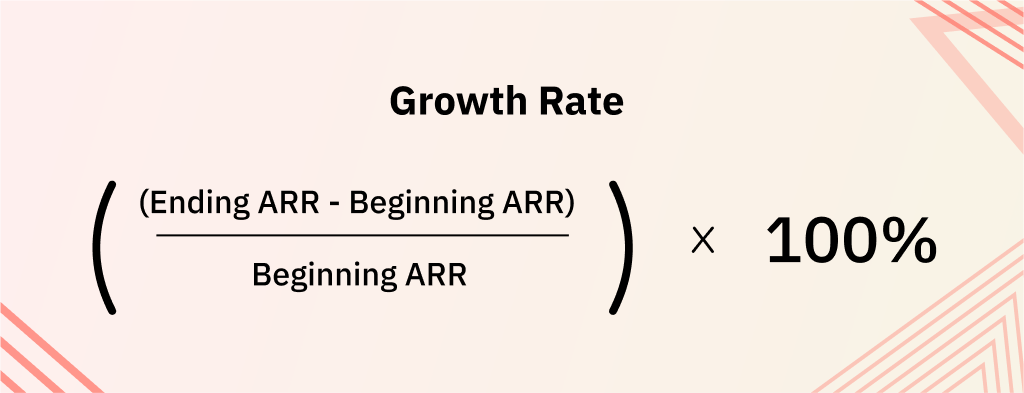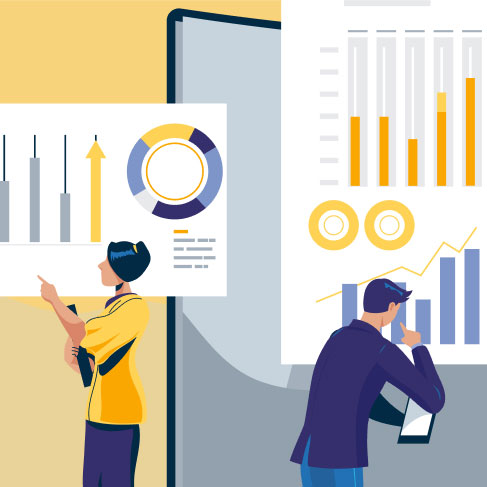SaaS Growth Blueprint: A Comprehensive Guide for Startups
November 28, 2023 | Read Time : 3 mins
Table of Contents
Growth is the cornerstone of success in the dynamic and ever-evolving world of Software as a Service (SaaS). For startups venturing into this competitive realm, achieving sustainable and impressive growth is paramount to attracting investors, expanding market share, and establishing a thriving business.
Understanding and optimizing SaaS revenue growth rates is crucial for startups to effectively navigate this landscape and establish a strong foothold in the industry.

Decoding SaaS Revenue Growth Rate
SaaS revenue growth rate measures a company’s financial health, showing the percentage increase in annual recurring revenue (ARR) over a specific period, usually a year. It reflects the company’s success in acquiring new customers, expanding relationships, and increasing customer lifetime value (CLV).
Calculating Revenue Growth Rate: Calculating SaaS revenue growth is simple: compare the ARR at the start and end of the period. The formula is:
Growth Rate = ((Ending ARR – Beginning ARR) / Beginning ARR) * 100%
For instance, if a company’s ARR at the beginning of the year was $1 million and its ARR at the end was $1.5 million, its revenue growth rate would be 50%. This indicates that the company’s revenue has increased by 50% over the year.
Establishing SaaS Growth Benchmarks: SaaS growth benchmarks provide valuable insights into industry standards and expectations. While growth rates vary depending on company size, stage, and industry, these benchmarks guide startups in assessing their performance against industry norms.
Based on a study by SaaS Capital, the average SaaS growth rate varies from 15% to 45% year-over-year. Early-stage startups often achieve higher growth rates, with ARR growth reaching 144% in the first year. While growth rates may moderate as companies mature, sustained growth remains crucial for long-term success.

Charting the Path to Future Growth
Forecasting future revenue growth is crucial for startups to make informed business decisions, allocate resources effectively, and attract investors. Several methods can be employed to predict revenue growth, each with its strengths and limitations:
- Historical Trend Analysis: Examine past revenue trends to identify patterns and anticipate future growth trajectories. Analyzing historical data provides insights into potential shifts in growth patterns.
- Customer Growth Model: Project revenue growth based on expected customer acquisition and retention rates. Understanding the factors driving customer growth helps in more accurate forecasting.
- Market Analysis: Analyze market trends, competitor strategies, and industry projections to predict future demand. Insights from the competitive landscape and industry outlook inform informed decisions on growth strategies.
- Scenario Planning: Develop multiple growth scenarios under different assumptions to assess risk and opportunity. By considering various factors, startups can prepare for different market conditions and create contingency plans.
Strategies to Accelerate SaaS Growth
Achieving sustainable growth requires a combination of strategic initiatives, each tailored to address specific aspects of the SaaS business:
- Product-Market Fit: Ensure your product aligns with customer needs, addressing their pain points for effective customer attraction and retention, thereby driving revenue growth.
- Targeted Marketing: Reach ideal customer segments through effective campaigns and messaging, maximizing the impact of marketing efforts and driving customer acquisition.
- Sales Excellence: Develop a strong sales team with proven closing skills and a deep understanding of your product’s value proposition, effectively converting leads into paying customers.
- Customer Success: Prioritize customer satisfaction and retention with exceptional support and onboarding experiences, fostering positive customer relationships to increase lifetime value and drive recurring revenue.
- Data-Driven Decision-Making: Leverage data analytics to identify growth opportunities, optimize marketing, and enhance customer retention strategies, enabling informed decisions for business growth through data insights.
The Impact of Churn
Churn, or customer attrition, reduces recurring revenue, potentially costing SaaS companies up to 25% annually. Common reasons include lack of value, usability issues, poor customer service, pricing concerns, and competition.
There are many reasons why customers churn, but some of the most common include:
- Lack of value: The product or service must meet customer needs or expectations.
- Usability issues: The product could be easier to use or navigate.
- Poor customer service: The company needs to provide adequate support or assistance.
- Pricing issues: The product or service is too expensive or does not offer a good value for the price.
- Competition: The customer switches to a competitor’s product or service.
SaaS companies need to take a proactive approach and focus on customer retention to reduce churn. This includes:
- Identifying at-risk customers: Use data analytics to identify customers at risk of churning.
- Understanding the reasons for churn: Conduct surveys and interviews with churned customers to know why they left.
- Implementing retention strategies: To address the reasons for churn, such as improving product usability, providing better customer support, or offering more competitive pricing.
- Nurturing customer relationships: Build strong relationships with customers by providing personalized support, offering incentives for loyalty, and regularly communicating with them about product updates and promotions.
The Role of Customer Acquisition Cost (CAC)
Customer acquisition cost (CAC) is a company’s spending to acquire a new customer. It includes all the costs associated with marketing, sales, and customer onboarding.
CAC is an important metric for SaaS companies because it directly impacts their profitability. A high CAC can make it difficult for a company to achieve profitability, even with a high growth rate.
To optimize CAC, SaaS companies need to:
- Target the right audience: Focus marketing and sales efforts on the most likely customers.
- Improve conversion rates: Increase the percentage of leads that convert into paying customers.
- Reduce sales cycle length: Shorten the time it takes to acquire new customers.
- Negotiate better deals with vendors: Reduce the costs associated with marketing, sales, and customer onboarding.
Net Revenue Retention (NRR)
Net revenue retention (NRR) measures a company’s ability to retain existing customers and increase revenue over time. It is calculated by subtracting lost revenue from churned customers from the revenue generated from existing customers.
A high NRR indicates that a company effectively expands customer relationships and drives recurring revenue, which is essential for sustainable growth. A good NRR for a SaaS company is typically around 100%, but it can vary depending on the company’s industry and target market.
To increase NRR, SaaS companies need to:
- Reduce churn: Implement strategies to reduce customer churn, as discussed above.
- Upsell and cross-sell: Encourage existing customers to purchase more products or services.
- Increase customer lifetime value: Find ways to increase the revenue generated from each customer over their lifetime.
Product-Led Growth (PLG)
Product-led growth (PLG) is a strategy offering users a free trial or freemium version to showcase product value and encourage them to become paying customers. PLG aims to create a compelling user experience, fostering user upgrades. Some PLG benefits include:
- Lower CAC: Acquiring customers at a lower cost than traditional methods, as spending is focused on interested users.
- Higher conversion rates: Increased conversion of trial users to paying customers due to a risk-reducing trial experience.
- Increased customer satisfaction: Positive user experience with trials enhances satisfaction and loyalty, reducing churn.
To implement PLG successfully, SaaS companies should:
- Create a compelling free trial or freemium experience: Ensure the free trial or freemium version adds value, encouraging continued usage.
- Make it easy for users to upgrade: Streamline the process for users to upgrade, eliminating barriers like complex pricing or lengthy sign-ups.
- Use data to drive product improvements: Utilize data from free trial and freemium users to enhance the product, making it more valuable and increasing conversion rates.
The Importance of Market Expansion
Expanding into new markets offers SaaS companies access to a broader customer base and growth opportunities. Benefits include:
- Access to new customers: Entering new markets expands the customer base, potentially leading to increased revenue.
- Diversification of revenue streams: Market expansion helps diversify revenue streams, reducing vulnerability to economic downturns.
- Increased brand awareness: New markets can boost brand awareness, contributing to enhanced customer acquisition.
To successfully expand into new markets, SaaS companies need to:
- Conduct market research: Understand the competitive landscape, customer needs, and regulatory requirements in the new markets.
- Develop a localization strategy: Include product translation, adapted sales/marketing, and compliance with local laws.
- Build partnerships: Form partnerships with local companies for market knowledge, expertise, and customer relationships.
- Invest in local resources: Allocate resources like sales teams, customer support, and engineering locally to ensure quality service.






